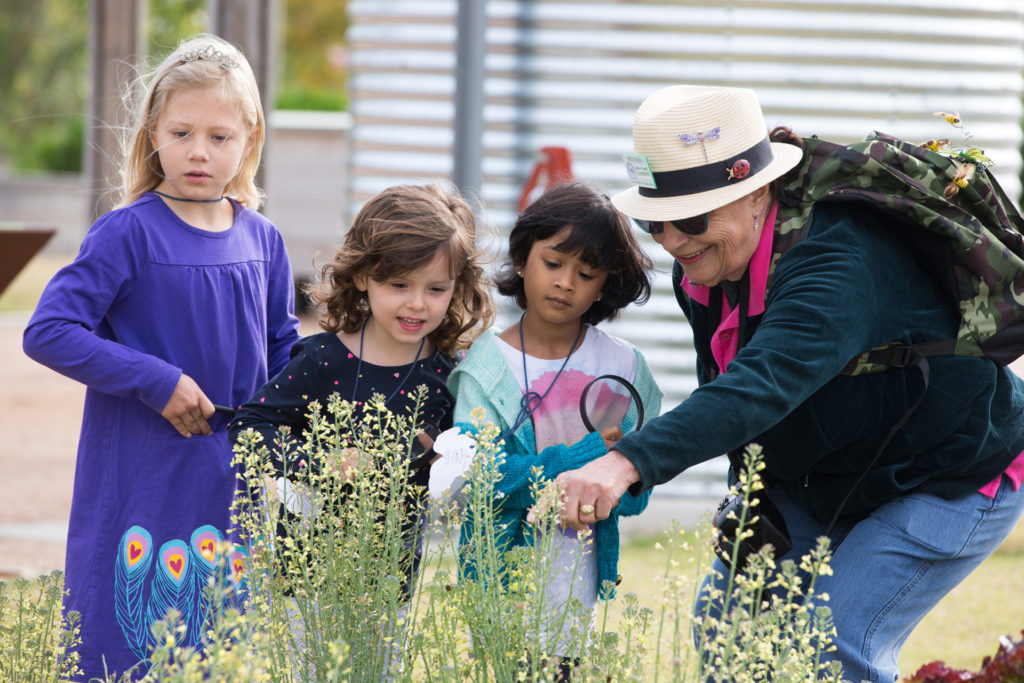Texas A&M researchers advocate for equity in STEM access
Study illustrates need for more informal learning opportunities for micropolitan areas, Indigenous groups
A team of researchers at Texas A&M University and Colorado State University found that micropolitan and high-poverty counties and certain communities of people—specifically Indigenous populations—lack equitable access to informal learning opportunities in STEM.

The researchers studied the locations of informal learning institutions, ILIs, that provide access to science, technology, engineering and math learning opportunities.
Members of the research team included Texas A&M AgriLife Research’s Rachel Short, Ph.D., Rhonda Struminger, Ph.D., and Michelle Lawing, Ph.D., in the Department of Ecology and Conservation Biology and undergraduate researchers James Pippin and Minna Wong. Collaborators from Colorado State University, CSU, included Jill Zarestky, Ph.D., and graduate student Lauren Vilen.
In their article, recently published in Science Advances, the researchers propose that more opportunities for informal STEM learning should exist in these communities.
An avenue for improving science literacy and representation in STEM
The article also notes that availability of these learning opportunities is critical to ensuring the general public has access to scientific information—especially those who might otherwise be historically excluded in STEM, such as minorities, girls and women.
“Creating informal STEM education opportunities within underserved areas and for underrepresented groups can reduce barriers, promote science literacy, and contribute to better representations in STEM careers,” the article explains.

In the publication, the research team stressed that ILIs such as zoos, aquariums, museums, science centers, public libraries, national parks, biological field stations and botanical gardens allow visitors to explore and process STEM-related information they might not otherwise have access to.
Texas A&M University hosts similar institutions within the College of Agriculture and Life Sciences, including The Gardens at Texas A&M University and the Ecology and Natural Resources Teaching Area, ENRTA, where the public can engage in STEM-related learning outside of a standard classroom environment, free of charge. The ENRTA was one of the ILIs included in the dataset for this study.
High-poverty and metropolitan communities, Indigenous groups most affected
To conduct this research, the team mapped the locations of ILIs across the U.S. and compared the locations with population data, measures of poverty, and demographic information relating to race and ethnicity.
Through this analysis, the researchers identified 48 counties across the Great Plains, southeast and northwest of where no informal learning institutions exist at all, leaving over 327,000 people without adequate access to informal STEM education.
These ILI deserts disproportionately affect Indigenous and impoverished people, their data suggests. Further exploring this relationship, the team identified that micropolitan areas, those distant from metro areas but having populations of 20,000 or more people, are also underserved by ILIs.
A call for community partnerships to broaden participation in STEM
Using their findings, the research team provides recommendations for future collaborations to bring ILIs to these geographic regions, void or lacking informal learning opportunities in STEM, to broaden participation of underserved populations.
Struminger, Lawing and CSU’s Zarestky served as the primary investigators on a National Science Foundation – Advancing Informal STEM Learning grant, which supported this project.
“In the areas we identify as underserved by ILIs, national parks, biological field stations, and libraries are especially well situated to partner with each other,” Struminger said. “Together these venues could create new opportunities to engage the public with informal STEM experiences that can promote science literacy and potentially bring more diverse populations into STEM-related professions.”
Rachel Short, the lead author on the study, has a joint appointment as an NSF Postdoctoral Research Fellow in the Department of Ecology and Conservation Biology at Texas A&M University and at Georgia Institute of Technology.
Short said the research provides foundational evidence that systematic change is necessary before a more inclusive, diverse network of informal learning opportunities in STEM can be achieved.
“We hope that our research can contribute to raising awareness for and addressing the inequities that currently exist in informal STEM learning,” Short said. “Even though proximity does not guarantee access, it is a sizeable barrier to many people.”


